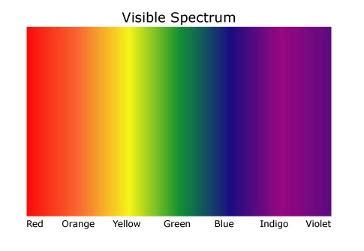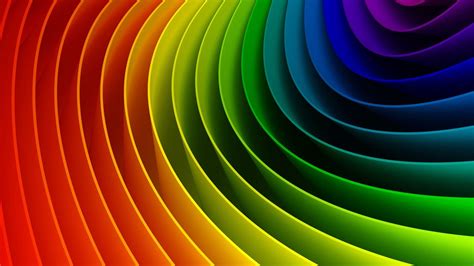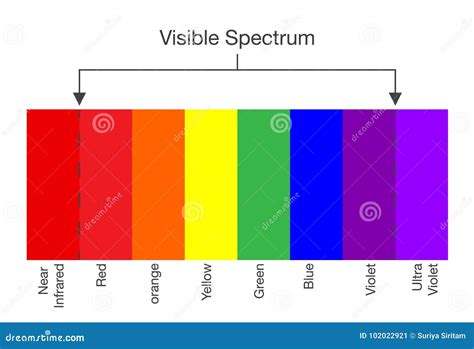The concept of spectrum color is a fundamental aspect of color theory, dealing with the way colors are perceived and arranged according to their wavelengths. When discussing spectrum color, it's essential to understand that the visible spectrum, which spans from approximately 380 nanometers (violet) to 740 nanometers (red), encompasses a wide range of colors that are visible to the human eye. This spectrum is often displayed in the form of a rainbow, where colors graduate smoothly from one to another, illustrating the continuous nature of the color spectrum.
Understanding the Color Spectrum

The color spectrum is not just a simple linear progression from red to violet; it’s a complex interplay of light, perception, and physical properties of materials. Each color within the spectrum has a specific wavelength, with shorter wavelengths appearing more towards the violet end and longer wavelengths towards the red end. This arrangement is a result of the way light behaves when it passes through a prism or water droplets in the air, a phenomenon that can be observed in rainbows or through the use of spectroscopic instruments.
Primary and Secondary Colors in the Spectrum
Within the context of the color spectrum, primary colors—red, blue, and yellow—are those that cannot be created by mixing other colors together. They are fundamental and serve as the basis for creating all other colors. Secondary colors, which include green (created by mixing blue and yellow), orange (created by mixing red and yellow), and violet (created by mixing blue and red), demonstrate how the color spectrum can be manipulated and extended through color mixing. Understanding the relationship between primary and secondary colors is crucial for artists, designers, and anyone working with colors, as it allows for the creation of a wide range of hues and shades.
| Color | Wavelength (nm) |
|---|---|
| Red | 620-750 |
| Orange | 590-620 |
| Yellow | 570-590 |
| Green | 520-570 |
| Blue | 450-520 |
| Violet | 400-450 |

Applications of Spectrum Color

The study and application of spectrum color extend far beyond the realm of art and design. In physics, understanding the color spectrum is crucial for the study of light and its properties. In biology, the color spectrum plays a significant role in the study of vision, especially in understanding how different species perceive colors. Furthermore, in technology, the manipulation of the color spectrum is essential for the development of displays, lighting systems, and other visual technologies.
Color Perception and the Brain
Color perception is a complex process that involves not just the eyes but also the brain. The brain interprets the signals sent by the eyes, allowing us to perceive and differentiate between various colors. This process is influenced by a multitude of factors, including the context in which colors are viewed, the surrounding colors, and even the emotional and cultural associations of colors. Understanding how the brain perceives colors can provide insights into why certain color combinations are more pleasing or effective than others.
Key Points
- The color spectrum is a continuous range of colors, each with a specific wavelength, visible to the human eye.
- Primary colors (red, blue, and yellow) are the base colors used to create all other colors.
- Secondary colors (green, orange, and violet) are created by mixing two primary colors.
- The color spectrum has applications in art, design, physics, biology, and technology.
- Color perception is a complex process involving both the eyes and the brain.
In conclusion, the concept of spectrum color is multifaceted and touches upon various aspects of human knowledge and experience. From the physical properties of light to the psychological and cultural implications of color perception, understanding the color spectrum can enrich our appreciation of the world around us and inspire creativity in numerous fields.
What is the visible spectrum of light?
+The visible spectrum of light, which is visible to the human eye, spans from approximately 380 nanometers (violet) to 740 nanometers (red). This range includes all the colors of the rainbow, each with a specific wavelength.
How are primary and secondary colors related in the color spectrum?
+Primary colors (red, blue, and yellow) are the fundamental colors that cannot be created by mixing other colors. Secondary colors (green, orange, and violet) are created by mixing two primary colors. For example, mixing blue and yellow creates green, a secondary color.
What are some applications of understanding the color spectrum?
+Understanding the color spectrum has applications in various fields, including art, design, physics, biology, and technology. It can help in the creation of art and design, the study of light and its properties, the understanding of vision and color perception, and the development of visual technologies.
